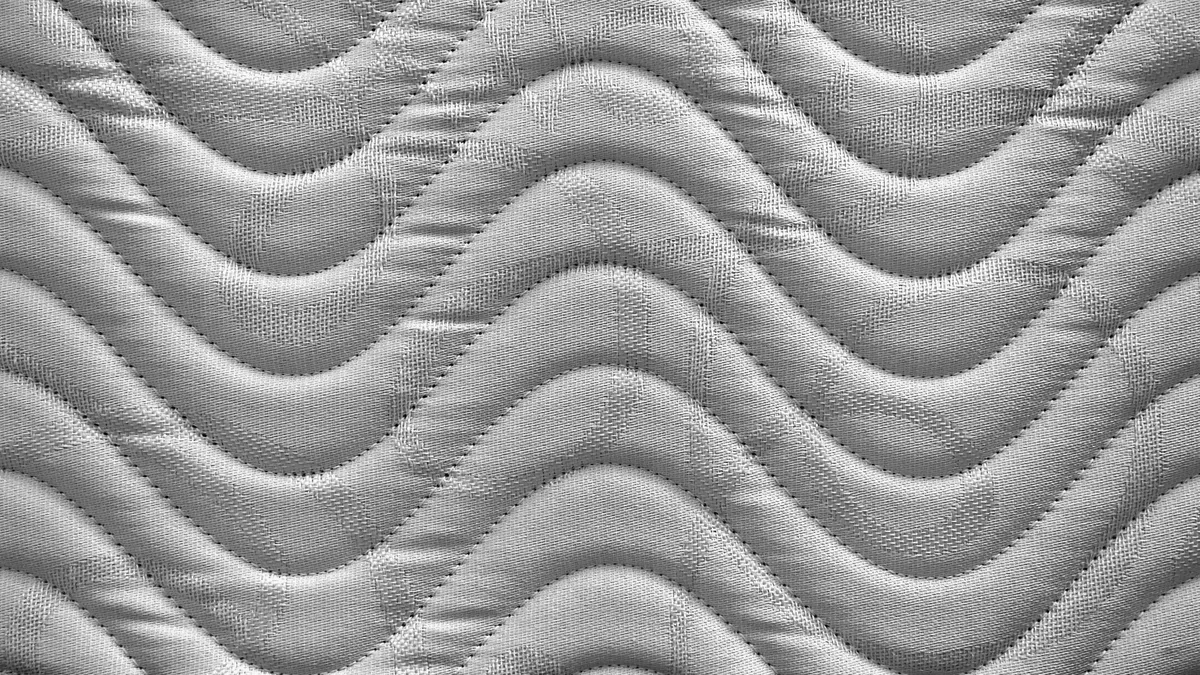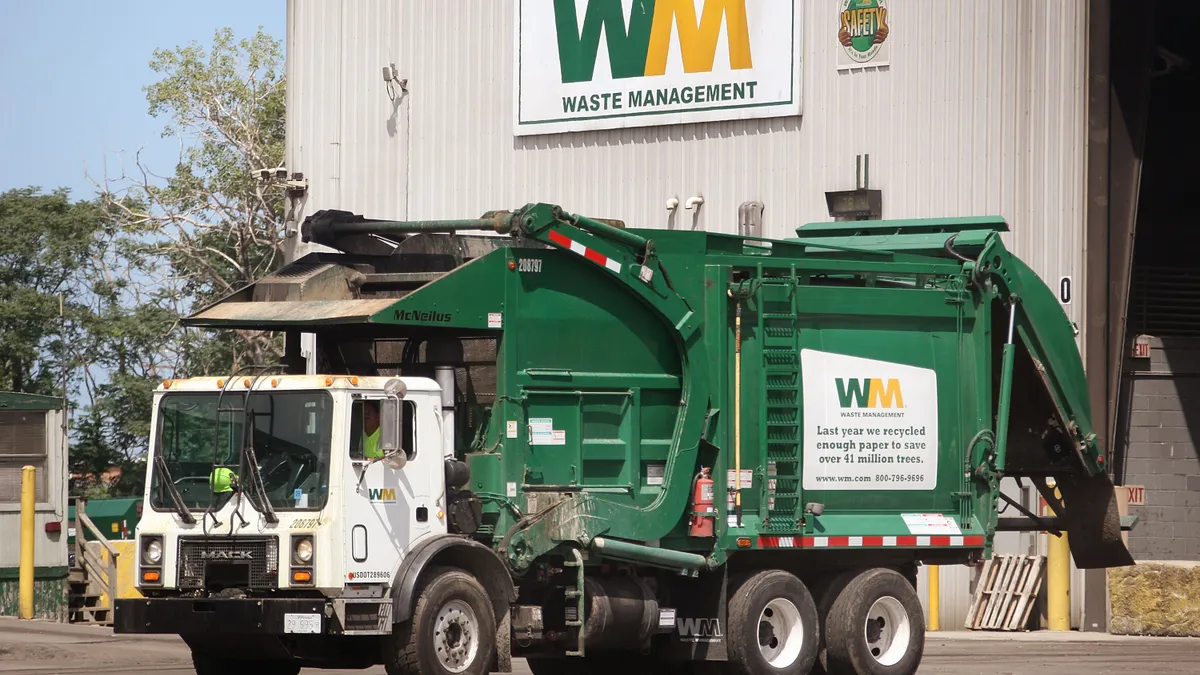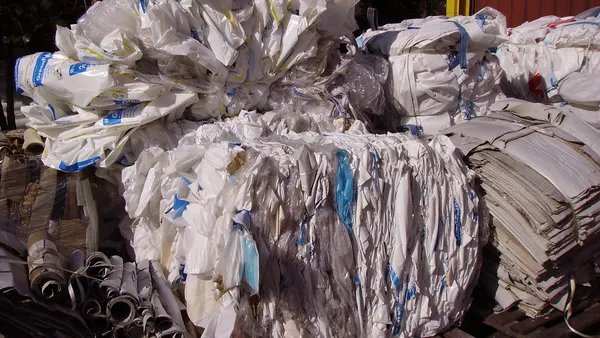As more states consider policy moves to bolster mattress recycling, changes in the way mattresses are purchased may have effects on the recycling process years down the line.
The promises of mattress recycling are appealing to local governments hoping to lower hauling costs and reach zero waste goals. Because they are bulky and exceedingly difficult to compact, mattresses are a challenge for the waste industry, and in some areas municipalities can be charged significant sums to dispose of them.
As a result, legislation around mattress recycling has gained momentum in recent years. Since 2015, California, Connecticut and Rhode Island have all launched extended producer responsibility (EPR) laws for these products. Other states are hoping to follow suit. A similar program is now being considered by legislators in Massachusetts, which generates 600,000 mattresses per year according to the Department of Environmental Protection (MassDEP). An estimated 75% of that volume ends up in landfills or incinerators. The agency is also pursuing its own disposal ban on mattresses.
But as the pandemic accelerates the ongoing shift toward a mail-order “bed in a box" system, the industry will have to consider the implications of new purchasing habits and materials that may increase the number of mattress disposed of each year, and decrease the variety of traditional end markets.
Mattress recycling today
As an item historically designed for longevity, there is a significant lag between when a mattress is purchased and when it is discarded. According to Mike O’Donnell, managing director at the Mattress Recycling Council (MRC) – a group forged by the International Sleep Products Association to oversee and expand mattress recycling in the U.S. He said this is an important factor in considering how programs will evolve.
“We have about an 11-year delay between what is being manufactured and when it comes into our recycling facilities,” said O'Donnell, referring to a study performed by MRC in 2019 that looked at the date tags on inbound mattresses, to help the organization begin to “forecast for the future.”
The industry has long been dominated by traditional box spring mattresses. These consist of a variety of materials, from the steel in its springs to the wood in its frames.
But in the last decade or so, modern mattresses have shifted toward a more homogenous composition, made of polyurethane foam.
It’s a consequence of the mail-order “bed-in-a-box” phenomenon, where companies compress their mattresses to reduce shipping costs. While boxed bedding has been around since at least 2006, it didn’t start gaining significant market share until the rise of the brand Casper, whose savvy and ubiquitous marketing brought the trend into the limelight. And as the pandemic drives more consumers to purchase goods online, it has only accelerated.
While the mattress industry embraces this new trend, modern mattress recycling has largely been built for the mattresses of old. The process is highly mechanical and involves separating a range of materials. In box spring mattresses, recyclers can recover up to 75% of weight (or 40 pounds of each mattress, according to the MRC’s estimate).
Those secondary markets are varied: Steel springs, for example, will go to the scrap metal industry, where they end up as building materials or fodder for new appliances. Wood from frames is shredded into mulch for landscaping projects. Fibers from the fabric lining end up in industrial oil filters. The foam padding inside is recycled into carpet insulation.
Recyclers say this diversity has its benefits. Stronger end markets, like scrap metal, can help buoy weaker ones, like shoddy. That low-grade pulp made of fibers and resin, which forms many interior mattress pads, has little to no value. In the end, recyclers can achieve a balance that makes the process worthwhile. While only a small percentage of the 15 million mattresses discarded in the U.S. each year are collected for recycling, the industry is keen to ensure processing systems can withstand the volume increase as recycling efforts expand.
“Many of the products recovered wind up going into low cost, mature to declining markets that are vulnerable to the economic cycle,” said O’Donnell in a webinar from last December, in which he presented MRC’s funding opportunities to seek new ideas for end market applications. “I’ve been around long enough to see recycling industries rise and fall… so we obviously want a robust program that would survive economic changes. And to do that, one way is to diversify the market.”
Yet as recyclers look to replace difficult-to-recycle parts of mattresses, this effort overlooks the fact that for some commodities, it is mattresses themselves which are the end market.
For example, shoddy mattress pads have long served as a valuable and rare end market for the 5% to 10% of used textiles that are unsuitable for trade in the secondhand market. And as the quality of clothing continues to decline, more textiles are ending up as shoddy, while its end uses spiral downwards. Replacing this material with, say, foam, further imbalances this already very fragile ecosystem.
David Schachman is vice president of New Jersey-based M. Chasen & Son, a third-generation company which has been in the business of recycling textiles since the 1920s. Whereas he once had several outlets for shoddy, today most of his production is for end use as pads in box spring mattresses. But even that is quickly declining.
“The foam mattress bed in a box has definitely taken off and definitely reduced sales for inner spring mattresses,” said Schachman. “It has definitely hurt sales [for shoddy].”
Bed in a box
Some critics say the main concerns aren’t so much around the changing composition of mattresses. In fact, many recyclers say markets for foam as input for carpet underlay are currently quite strong. Instead, they worry about the change in consumer behavior that mail-order mattress companies encourage.
Boxed bedding companies like Casper and Helix boast generous extended warranties to draw in consumers, allowing customers to return products for anywhere from 90 days to up to a year. One Wall Street Journal reporter sifted through all the warranties online, and found all the offers available would technically allow her to sleep on a mattress "for free" for up to eight years.
Jessica Alexander of the National Bed Federation in the United Kingdom said that one of the unfortunate consequences of these extended warranties is return rates for “faulty mattresses” have increased. One of her sources, who is a main recycler in the UK, told her the comfort guarantee returns rate they are seeing from five different suppliers is between 14% and 20%. For context, mattresses sold more conventionally in-store through retailers without these extended guarantees have significantly lower return rates, at around 1% or 2%, or "perhaps a little higher on returns for other reasons, such as comfort issues, around 5%."
Alexander is concerned about what is happening to the mattresses that are returned after such a short period of use. According to her source, around 75% are refurbished and sold as rejuvenated mattresses on eBay and Amazon, whereas an estimated 25% are dismantled and the materials recycled because the condition is not good enough.
According to Schachman, who in addition to shoddy processing also collects polyurethane foam mattresses, the increase in returns is highly visible. Several years ago, his company was working with Casper to chop up the foam, bale it, and sell it to a processor in Connecticut for recycling into carpet underlay.
“We used to take all their rejects, because you get those trials and if it’s damaged or something like that, they basically just throw it out.” he said. Eventually, the volume grew unmanageable. “We had to stop because we were taking like a trailer a week. And they needed us to take a trailer a day, if not more. And I couldn't handle it. So we had to turn it away.”
The pandemic has further discouraged shoppers from purchasing in-store and accelerated this trend. Casper declined to offer comment for this story.
Future trends
Despite changing trends in mattress production and consumption, some state and local governments remain optimistic about the prospects of mattress recycling moving forward.
In Massachusetts, for example, though state Senator Ed Kennedy’s bill to launch a mattress study commission fell through, his team is now looking at filing a bill for the current legislative session that would emulate EPR programs already in place in Connecticut, Rhode Island and California.
In the meantime, for the last several years MassDEP has doled out grants to municipalities hoping to jumpstart mattress recycling early. According to Greg Cooper, division director overseeing waste programs, many towns are motivated to take advantage of this funding, as disposal fees for mattresses have gotten quite high. In some cases this can cost up to $50, he said, in comparison with $19 or $20 for recycling.
Landfill operators, too, may be motivated to increase diversion for cost reasons. According to one report from Conigliaro Industries – a recycler based out of Framingham, Massachusetts – these mattresses, especially if they aren't compressed, take up valuable space and bring relatively low returns.
Building on this, MassDEP is planning a mattresses disposal ban that could take effect next year. Mattress industry advocates worry that a ban without EPR laws in place could be premature and place the burden on recycling infrastructure in nearby states, while haulers and transfer station operators have also raised concerns about enforcing compliance.
According to a statement from Sen. Kennedy’s office, the hope is the ban can eventually accompany EPR laws. “Mattress recycling availability is not currently consistent across the Commonwealth,” wrote Kennedy. “We need an affordable, uniform system that makes it easier to recycle a mattress than to toss it on the side of the road or send it to the landfill.”
Ten years from now, when the mattress trends of today make their way into recycling streams — or sooner, as boxed bedding has been gaining market share for at least five years — recycling program managers say they don’t expect problems. Cooper even suggested a shift to foam might simplify the recycling process, which is currently quite intensive to “fillet.”
"I think it's a lot easier to handle in terms of dismantling," he said. "If you think about a bed in a box, it's just a big giant piece of foam."


















